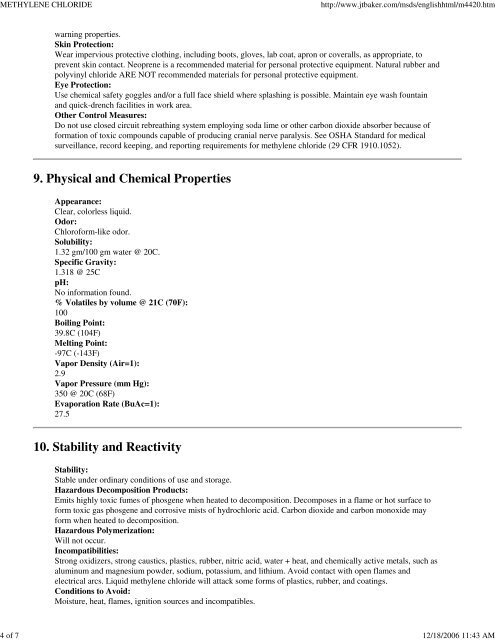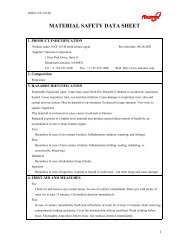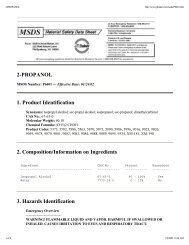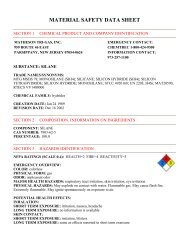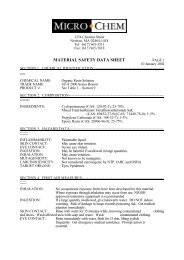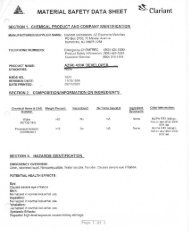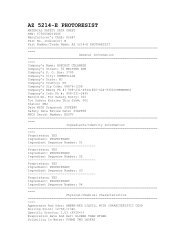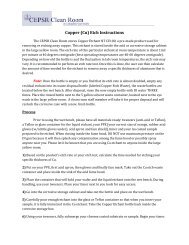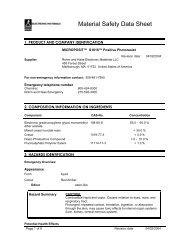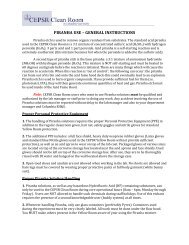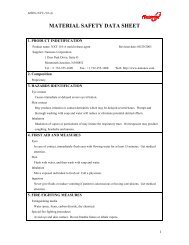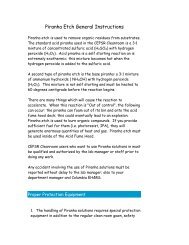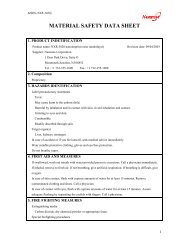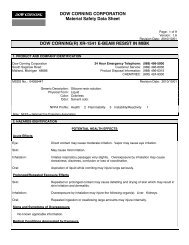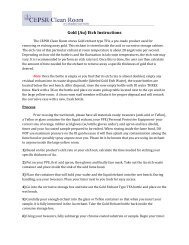METHYLENE CHLORIDE
METHYLENE CHLORIDE
METHYLENE CHLORIDE
You also want an ePaper? Increase the reach of your titles
YUMPU automatically turns print PDFs into web optimized ePapers that Google loves.
<strong>METHYLENE</strong> <strong>CHLORIDE</strong>http://www.jtbaker.com/msds/englishhtml/m4420.htm4 of 7 12/18/2006 11:43 AMwarning properties.Skin Protection:Wear impervious protective clothing, including boots, gloves, lab coat, apron or coveralls, as appropriate, toprevent skin contact. Neoprene is a recommended material for personal protective equipment. Natural rubber andpolyvinyl chloride ARE NOT recommended materials for personal protective equipment.Eye Protection:Use chemical safety goggles and/or a full face shield where splashing is possible. Maintain eye wash fountainand quick-drench facilities in work area.Other Control Measures:Do not use closed circuit rebreathing system employing soda lime or other carbon dioxide absorber because offormation of toxic compounds capable of producing cranial nerve paralysis. See OSHA Standard for medicalsurveillance, record keeping, and reporting requirements for methylene chloride (29 CFR 1910.1052).9. Physical and Chemical PropertiesAppearance:Clear, colorless liquid.Odor:Chloroform-like odor.Solubility:1.32 gm/100 gm water @ 20C.Specific Gravity:1.318 @ 25CpH:No information found.% Volatiles by volume @ 21C (70F):100Boiling Point:39.8C (104F)Melting Point:-97C (-143F)Vapor Density (Air=1):2.9Vapor Pressure (mm Hg):350 @ 20C (68F)Evaporation Rate (BuAc=1):27.510. Stability and ReactivityStability:Stable under ordinary conditions of use and storage.Hazardous Decomposition Products:Emits highly toxic fumes of phosgene when heated to decomposition. Decomposes in a flame or hot surface toform toxic gas phosgene and corrosive mists of hydrochloric acid. Carbon dioxide and carbon monoxide mayform when heated to decomposition.Hazardous Polymerization:Will not occur.Incompatibilities:Strong oxidizers, strong caustics, plastics, rubber, nitric acid, water + heat, and chemically active metals, such asaluminum and magnesium powder, sodium, potassium, and lithium. Avoid contact with open flames andelectrical arcs. Liquid methylene chloride will attack some forms of plastics, rubber, and coatings.Conditions to Avoid:Moisture, heat, flames, ignition sources and incompatibles.


